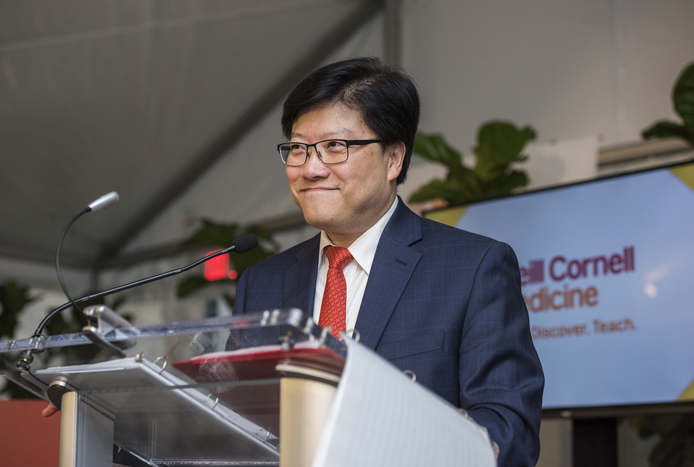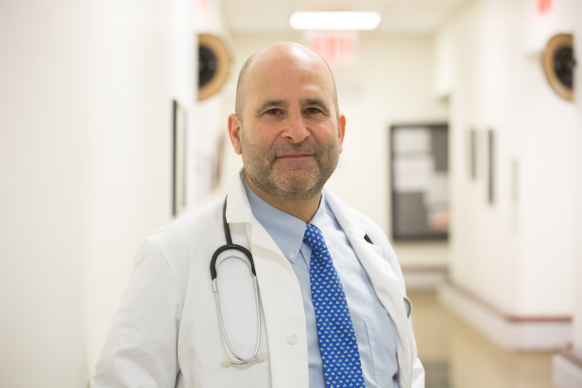
Medical schools evaluating the merits of eliminating tuition, as opposed to pursuing debt-free initiatives, should approach the debate in the same way physicians and scientists engage in medicine: with empirical data, according to new commentary by leaders at Weill Cornell Medicine.
The paper, published online Dec. 31 in the Annals of Internal Medicine, lauds overall efforts to address the soaring costs of medical education, which has hindered racial and socioeconomic diversity within the medical workforce. Offering free tuition to all students “might seem a perfect solution” to help defray the cost of medical education and diversify the student body. Yet, no longitudinal data exists that proves whether such subsidies will in fact achieve that goal, write the authors, Dr. Augustine M.K. Choi, the Stephen and Suzanne Weiss Dean of Weill Cornell Medicine, and Dr. Mark S. Lachs, co-chief of the Division of Geriatrics and Palliative Medicine and the Irene F. and Roy I. Psaty Distinguished Professor of Clinical Medicine at Weill Cornell Medicine.
“Although evidence-based medicine guides medical practice, we find it intriguing that growing interest in free tuition has been made in the relative absence of data,” the authors write. They cite reports from the Association of American Medical Colleges showing about 22 percent of graduating students in 2019 said the impact of debt had a strong or moderate influence on their choice of medical specialty, while nearly 55 percent said debt had no influence on that choice.

Dr. Mark Lachs. Credit: Julia Xanthos Liddy
“Debt is only one factor that influences career choice, and the high value of a medical degree arguably offsets up-front costs, albeit at different rates for different specialties,” the authors say in the piece.
Given this relative lack of data, the authors say that eliminating medical education debt for those who have financial need may be a better use of medical schools’ resources and may be a more successful model for diversifying the workforce. Moreover, the authors also suggest that subsidizing medical education loan payments for residents pursuing careers in less lucrative medical specialties may encourage more trainees to work in those disciplines.
The authors argue from experience. In September, Weill Cornell Medicine launched a debt-relief program for all current and future medical students with financial need that fully covers tuition, room and board, books and health insurance, starting with the 2019-2020 academic year. The program expands the institution’s scholarship offerings so that students who qualify for financial aid, and otherwise would have taken out loans to cover their medical education costs, will now graduate debt-free. In establishing this program, Weill Cornell Medicine joined a national conversation about how to address the soaring costs of higher education.
In addition, the institution launched an “Adopt a Geriatrician” program that will repay student loans for incoming geriatrics fellows during their fellowship period. The ramifications of both initiatives on career choice and overall well-being will be analyzed using various scientific methods, the authors write.
“Geriatrics could be seen as the poster child for this problem, but this issue is not unique to that specialty,” said Dr. Lachs, who is also director of geriatrics for the NewYork-Presbyterian Healthcare System. “Primary care, endocrinology, pediatrics and infectious diseases are also traditionally not as well-paying and have trouble attracting people because of indebtedness. This program is a much more strategic and directed flow of limited resources.”
Drs. Choi and Lachs have fielded challenges from some colleagues over the new Weill Cornell Medicine initiatives, such as from those who suggest that medical residents who choose “undersubscribed fields” might opt for a more lucrative specialty once their debt is eliminated.
The authors liken it to “vesting” in other industries, wherein employees are increasingly rewarded for more continuous years of service.
“Steering a young doctor toward these traditionally less-lucrative specialties, who will care for thousands of people over the course of their career, is a leveraged investment,” Dr. Lachs said, adding that he and Dr. Choi hope other institutions follow Weill Cornell Medicine’s example. “And these are not extraordinary amounts of money for establishing a person in their career.”
The authors say it could be argued their strategy is “an indirect and local ‘workaround’ to a national problem: Geriatricians, primary care doctors and those in other critical specialties should be compensated appropriately to increase their ranks.”
However, they write, “We are pragmatists who have watched lobbying efforts in this arena for nearly three decades. The need is urgent.”
